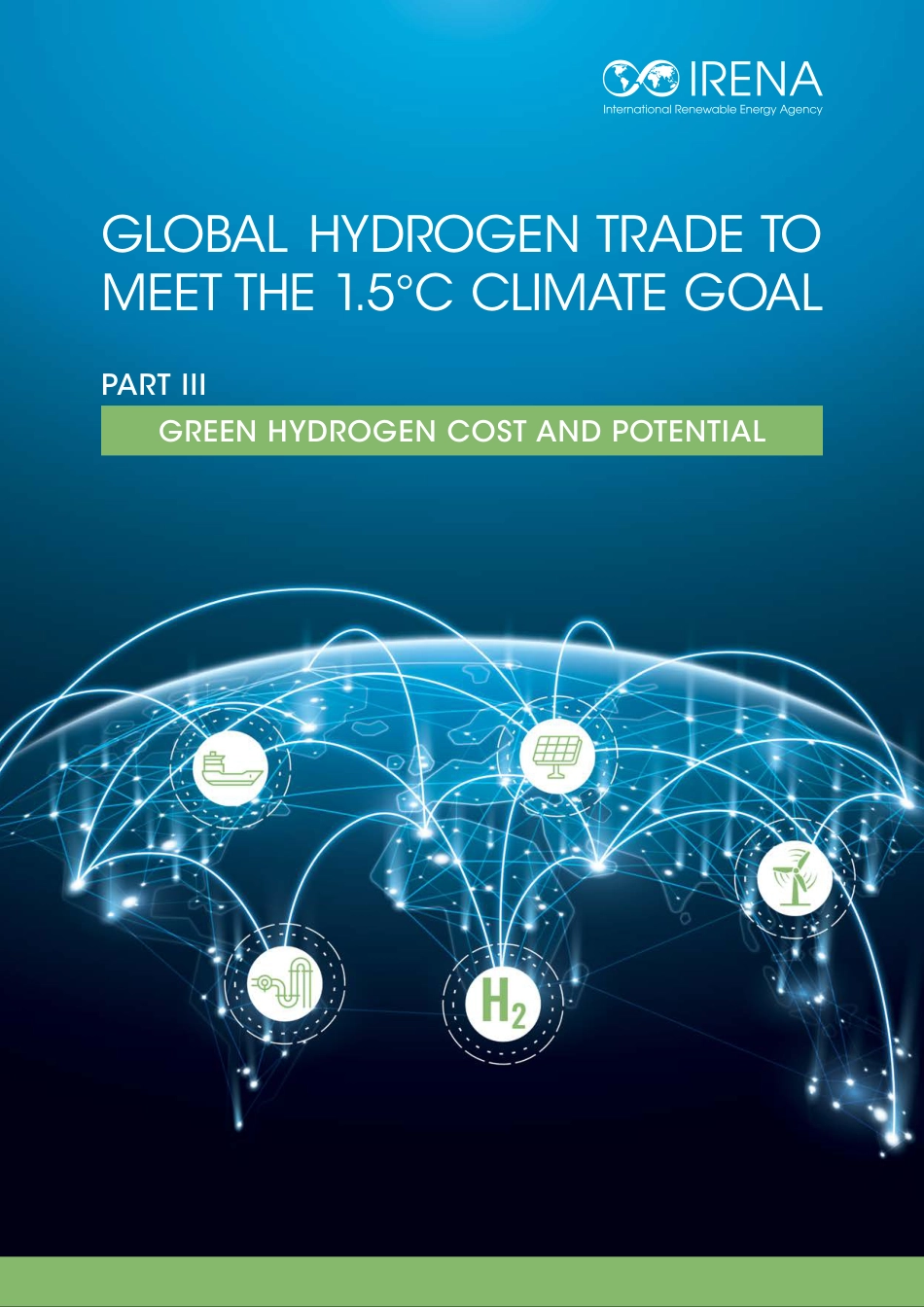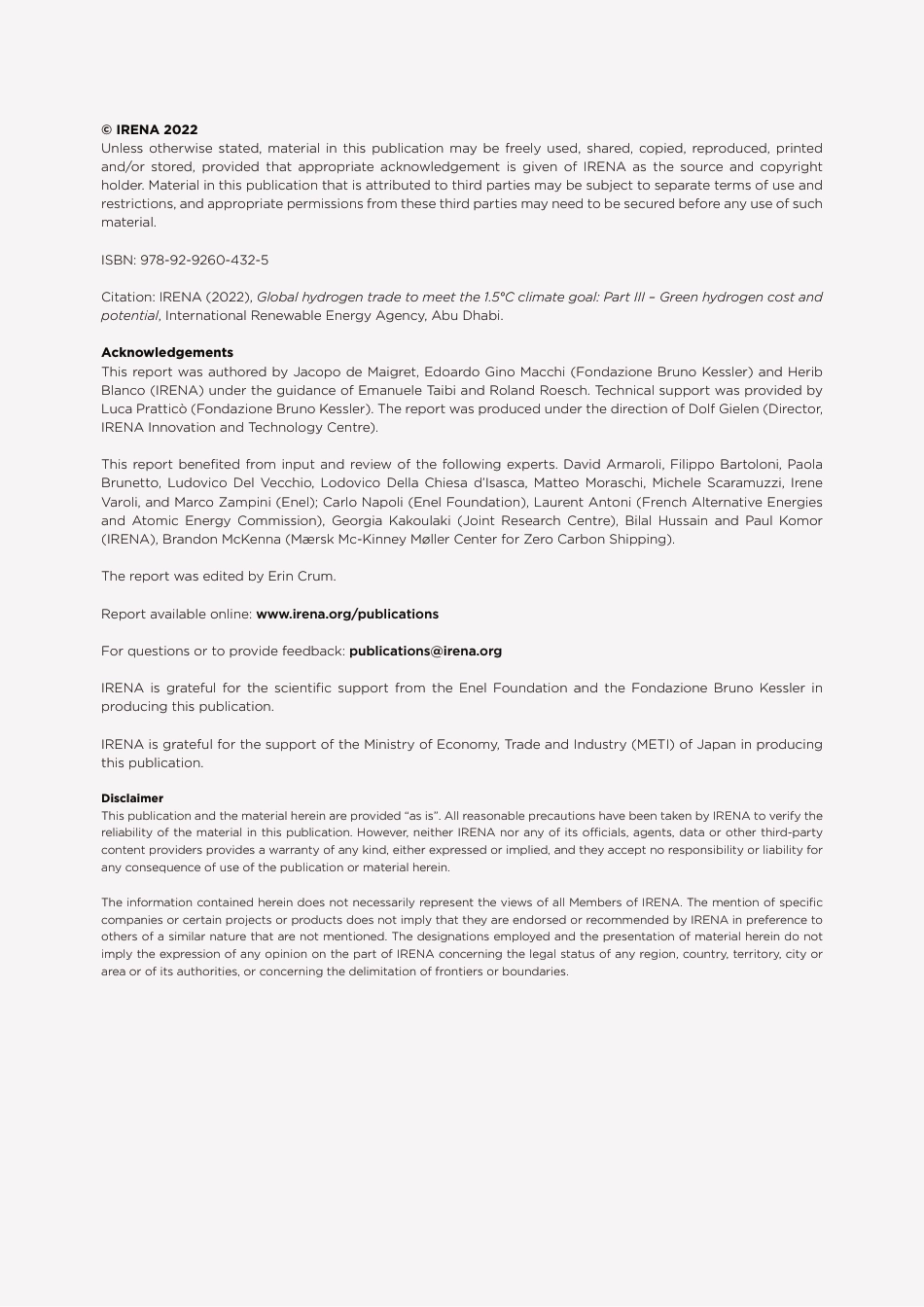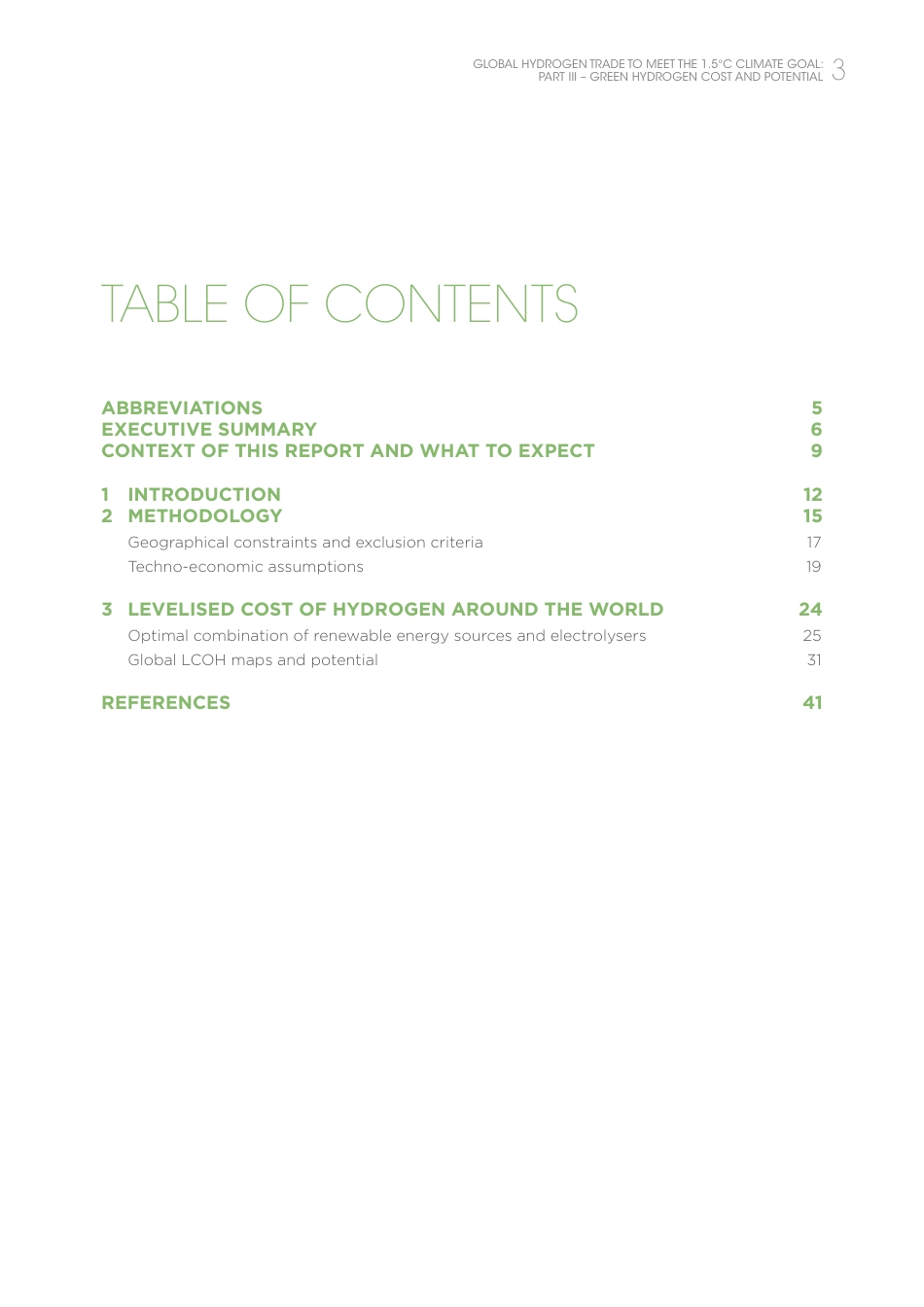GLOBAL HYDROGEN TRADE TO MEET THE 1.5°C CLIMATE GOALPART IIIGREEN HYDROGEN COST AND POTENTIAL© IRENA 2022Unless otherwise stated, material in this publication may be freely used, shared, copied, reproduced, printed and/or stored, provided that appropriate acknowledgement is given of IRENA as the source and copyright holder. Material in this publication that is attributed to third parties may be subject to separate terms of use and restrictions, and appropriate permissions from these third parties may need to be secured before any use of such material. ISBN: 978-92-9260-432-5Citation: IRENA (2022), Global hydrogen trade to meet the 1.5°C climate goal: Part III – Green hydrogen cost and potential, International Renewable Energy Agency, Abu Dhabi.AcknowledgementsThis report was authored by Jacopo de Maigret, Edoardo Gino Macchi (Fondazione Bruno Kessler) and Herib Blanco (IRENA) under the guidance of Emanuele Taibi and Roland Roesch. Technical support was provided by Luca Pratticò (Fondazione Bruno Kessler). The report was produced under the direction of Dolf Gielen (Director, IRENA Innovation and Technology Centre).This report benefited from input and review of the following experts. David Armaroli, Filippo Bartoloni, Paola Brunetto, Ludovico Del Vecchio, Lodovico Della Chiesa d’Isasca, Matteo Moraschi, Michele Scaramuzzi, Irene Varoli, and Marco Zampini (Enel); Carlo Napoli (Enel Foundation), Laurent Antoni (French Alternative Energies and Atomic Energy Commission), Georgia Kakoulaki (Joint Research Centre), Bilal Hussain and Paul Komor (IRENA), Brandon McKenna (Mærsk Mc-Kinney Møller Center for Zero Carbon Shipping).The report was edited by Erin Crum.Report available online: www.irena.org/publications For questions or...



